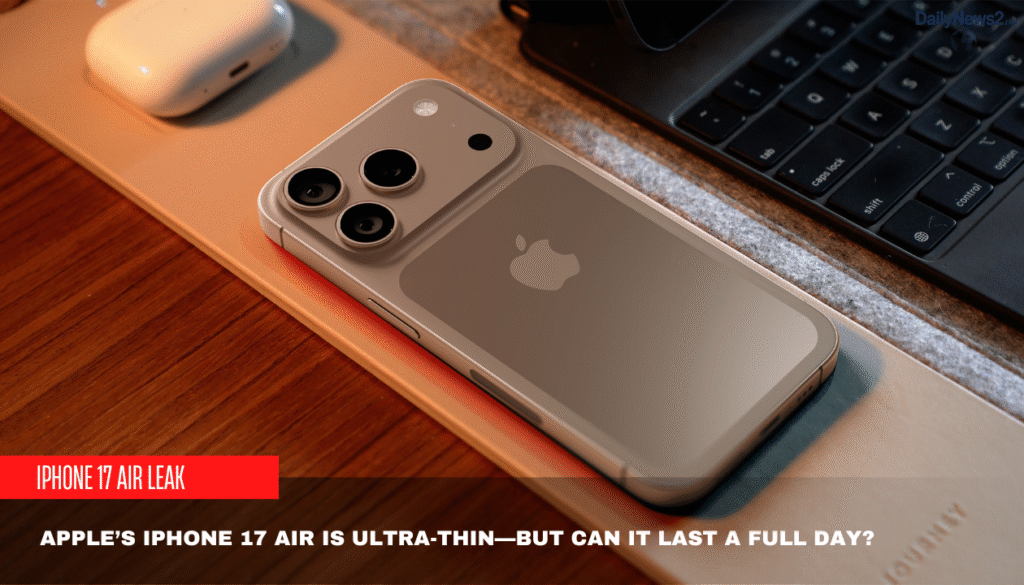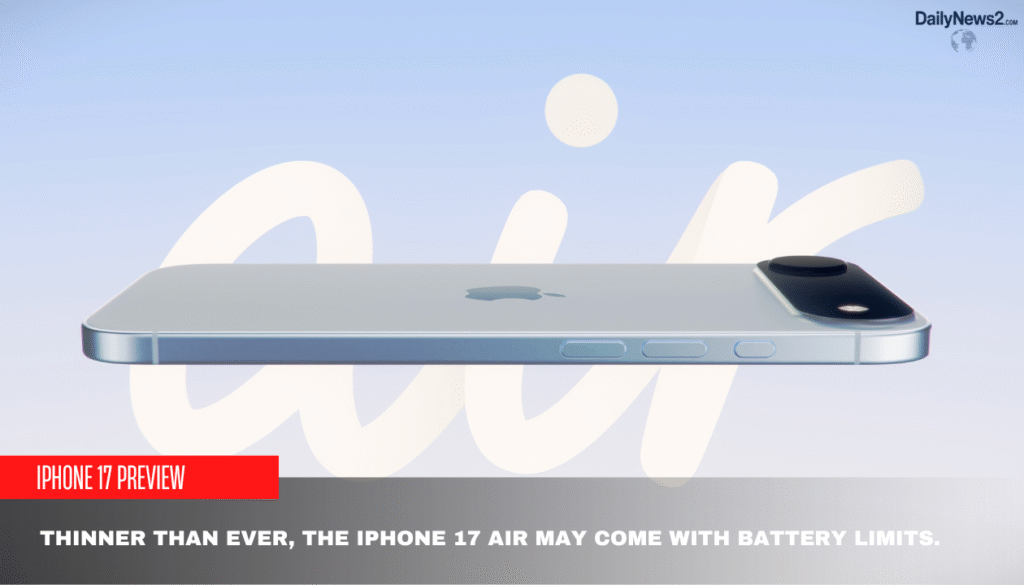Apple is once again redefining smartphone design with the upcoming iPhone 17 Air, rumored to be the thinnest and lightest iPhone yet. According to recent reports, the device will measure just 5.5mm in thickness and weigh around 145 grams, making it even lighter than the iPhone 13 mini. However, this impressive design shift comes with a notable compromise: battery life.
A Featherweight with a Bigger Screen
Despite its ultra-slim profile, the iPhone 17 Air is expected to feature a 6.65-inch display—larger than any previous “mini” or compact iPhone models. The reduced weight and thin frame will likely appeal to users who value portability without sacrificing screen size.

The Battery Compromise
Here’s the catch: the battery capacity is just 2800mAh—significantly smaller than even the base iPhone 16 (3561mAh) and far below the 16 Plus (4674mAh) or 16 Pro Max (4685mAh). Internal testing reportedly shows that only 60–70% of users might get through a full day of use without needing to recharge, compared to the 80–90% standard Apple typically aims for.
This has raised concerns, especially as users expect larger-screen devices to handle more tasks. Apple is said to be working on high-density battery tech that could increase effective capacity by 15–20%. Additionally, iOS 19 will reportedly introduce AI-powered battery optimizations, but how much real-world impact this will have remains to be seen.
Possible Workarounds (With Trade-offs)
One possible workaround? A dedicated battery case—a move Apple has used before with older models. However, this could undermine the iPhone 17 Air’s sleek, minimalist design, which is its core selling point. Balancing form and function may prove tricky with this generation.

The iPhone 17 Lineup: What Else to Expect
While the Air model targets ultra-portability, the upcoming iPhone 17 Pro and Pro Max are expected to focus on performance and features. These models may avoid the battery compromises of the Air while introducing new enhancements, including a rumored sky blue color option, continuing Apple’s trend of bold finishes seen in the iPhone 16 and MacBook Air.
The official launch is expected in early September 2025, with preorders shortly after. Prices are likely to rise, driven more by feature upgrades and production costs than international tariffs, though global trade factors could still influence pricing.

Final Thoughts
The iPhone 17 Air looks to be a bold experiment in design minimalism, perfect for users who prioritize a light, slim form factor. But its reduced battery life may be a deal-breaker for power users. As always, the broader iPhone 17 lineup may offer more balanced options for those who can’t afford to trade endurance for elegance.





